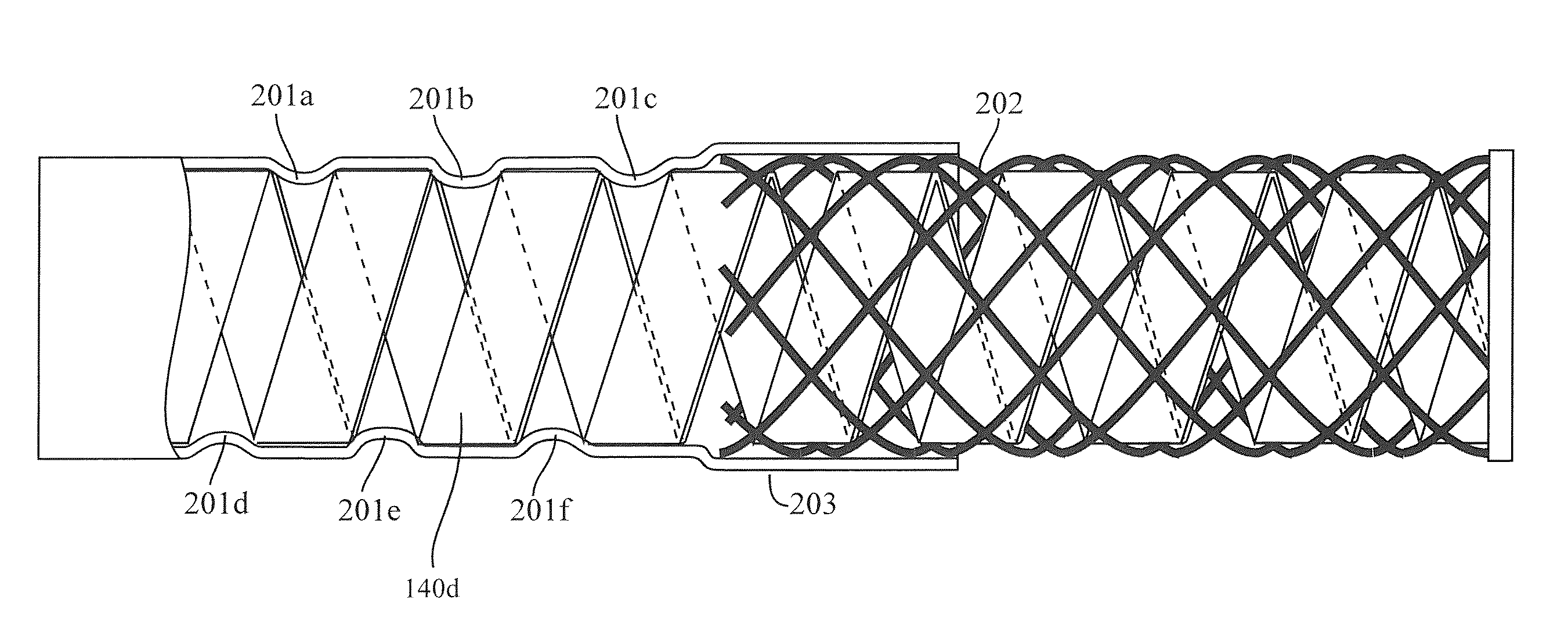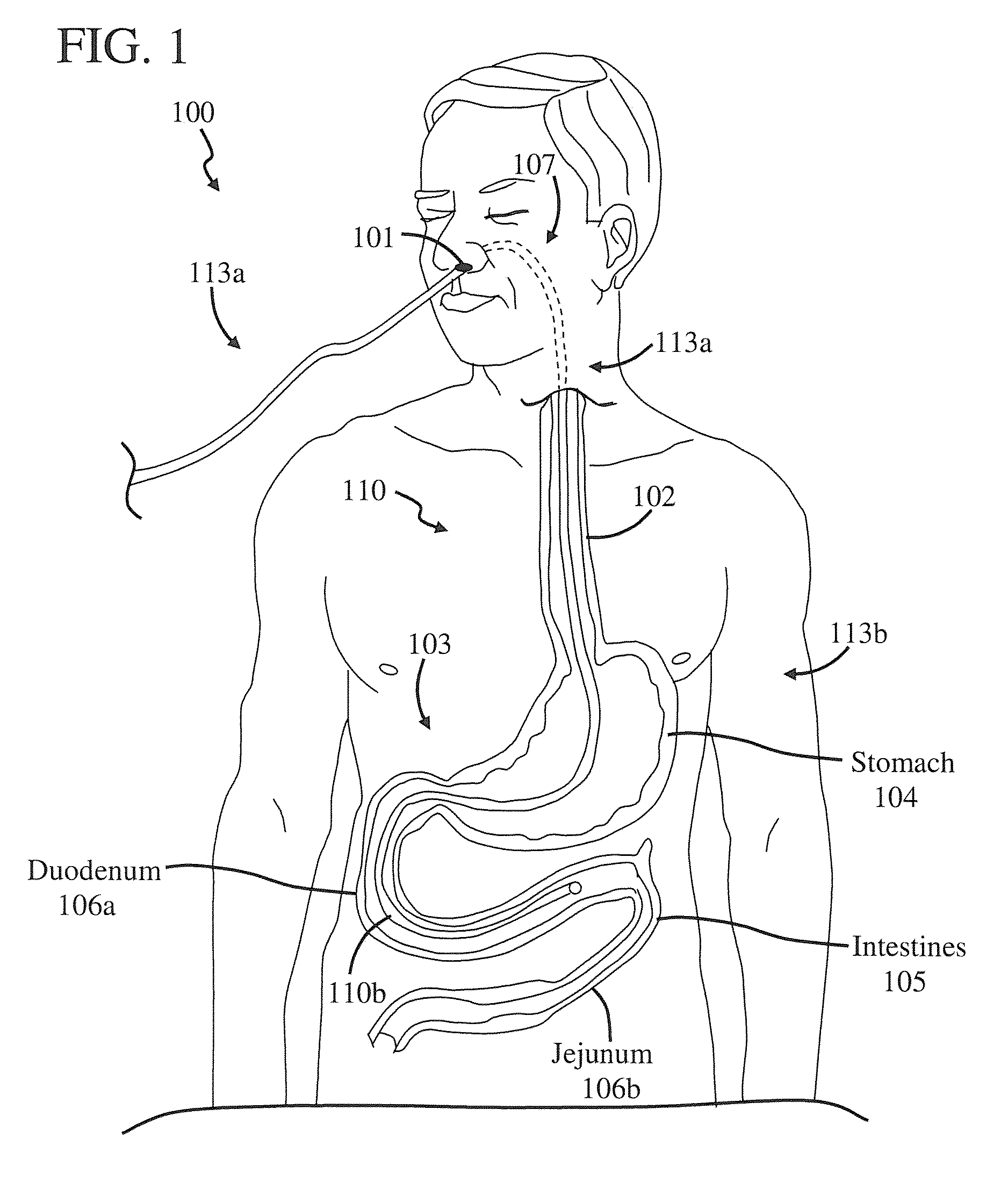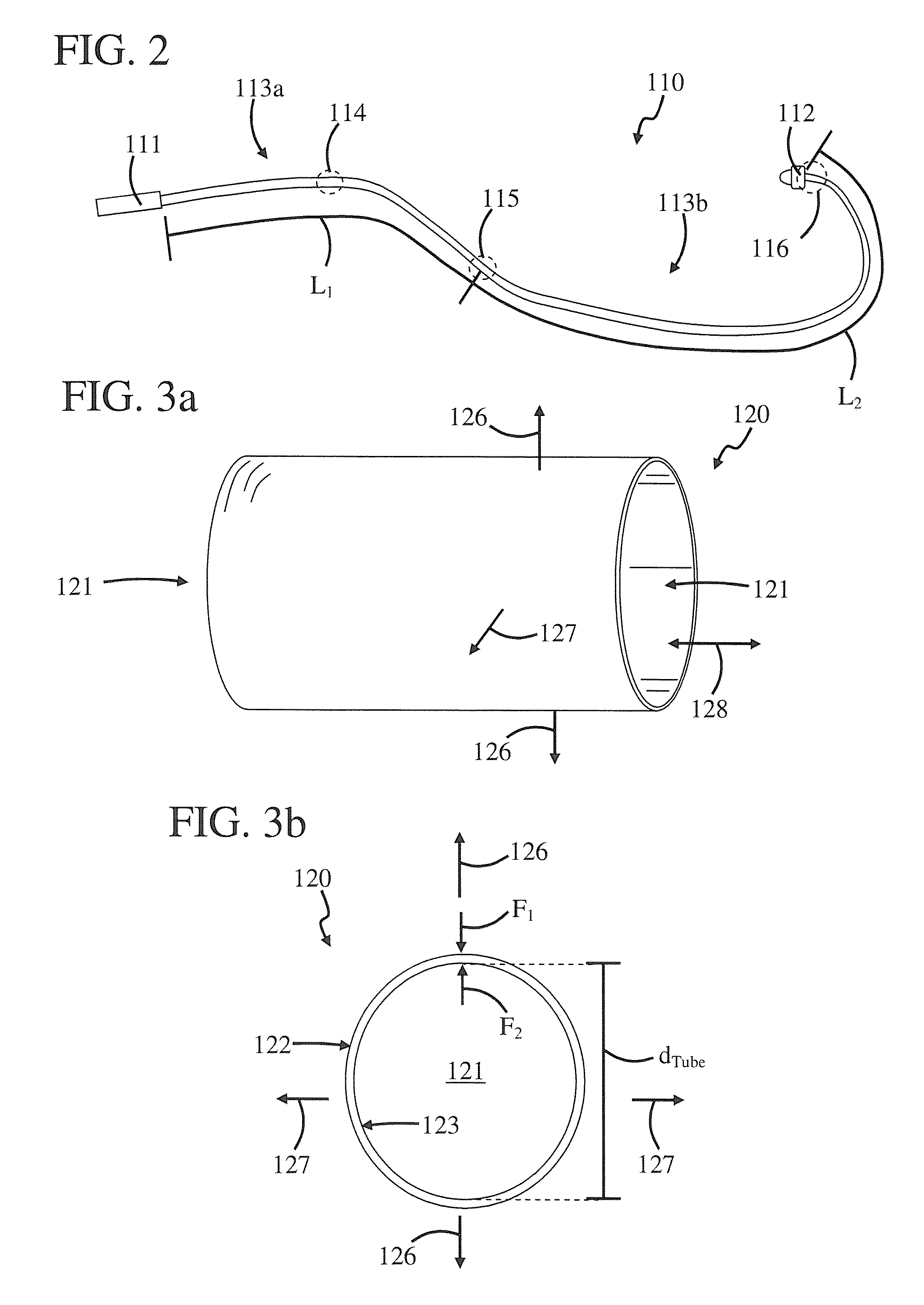Catheter and method of making the same
a catheter and catheter technology, applied in the field of medical devices, can solve the problems of irritating sensitive tissue, a greater risk of occlusion of the aspiration channel, and less certain aspiration flow, so as to improve the flow rate and occlusion resistance, improve the flexibility of the aspiration channel, and improve the occlusion resistance.
- Summary
- Abstract
- Description
- Claims
- Application Information
AI Technical Summary
Benefits of technology
Problems solved by technology
Method used
Image
Examples
Embodiment Construction
[0069]FIG. 1 is a front view of a person 100 with a catheter 110 inserted therein. It should be noted that catheter 110 can be used as many different medical devices, such as a feeding tube, aspirating tube, etc. Further, catheter 110 includes a single lumen in this embodiment, but it can include more than one lumen, if desired. An embodiment of catheter 110 which includes two lumens is often referred to as a dual lumen catheter. One example of a dual lumen catheter includes feeding and aspirating tubes, wherein the feeding tube extends through the aspiration tube. The feeding tube is positioned distal to but in close proximity (<5 cm) to the end of the aspiration tube, but still within the same anatomical segment of the G-I tract, e.g the duodenum. More information regarding dual lumen devices can be found in the references cited in the Background.
[0070]In this embodiment, catheter 110 has been positioned so it extends through a nasal passage 101 of person 100 and esophagus 102 and...
PUM
 Login to View More
Login to View More Abstract
Description
Claims
Application Information
 Login to View More
Login to View More - R&D
- Intellectual Property
- Life Sciences
- Materials
- Tech Scout
- Unparalleled Data Quality
- Higher Quality Content
- 60% Fewer Hallucinations
Browse by: Latest US Patents, China's latest patents, Technical Efficacy Thesaurus, Application Domain, Technology Topic, Popular Technical Reports.
© 2025 PatSnap. All rights reserved.Legal|Privacy policy|Modern Slavery Act Transparency Statement|Sitemap|About US| Contact US: help@patsnap.com



